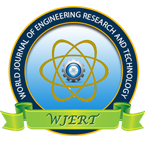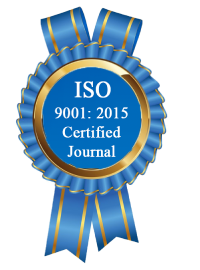| All | Since 2020 | |
| Citation | 172 | 110 |
| h-index | 7 | 5 |
| i10-index | 1 | 0 |
WJERT Citation 
Login
News & Updation
Abstract
MOOCS: THE TECHNOLOGICAL GAME CHANGER IN HIGHER EDUCATION
*Rakesh Singh and Madhvi Parasher
ABSTRACT
The rapid increase in the use of information technologies throughout educational institutions is changing the way teachers and students learn, work, and establish collaboration. The learning cycle is an on-going process that is designed to improve the quality of, as well as collaboration among learners. Recent announcements from top Universities to turn to new forms of educational delivery called ?MOOCs? (Massive Open Online Courses) have captured the interest of academics and students in higher education. MOOCs are one of the most prominent developments in online higher education in recent years aimed at unlimited participation and open access via the Web. With MOOCs, the teaching method is moving from the traditional transfer learning model where the teacher serves as the repository and transmitter of knowledge to the flipped classroom model where the learner interacts with other students, peers, and has flexible access to all information and resources around him before coming to the classroom. With the huge amount of online educational material, this has become a useful and beneficial method in teaching. The value of MOOCs comes when you use them to create hybrids that are the best of both worlds. Rather than having the instructor lectures during class and then send the students home with assignments, many instructors are now using MOOCs to flip the classroom. The more we know about effective uses of technologies for teaching and learning, the faster we can adopt these new practices, facilitate their proliferation across higher education, and increase student success?. These massive open online courses which have global reach, unlimited participation, and open access over the internet via a combination of social networking and video podcasts is attracting a huge variety of students of different ages, nationalities, backgrounds, abilities, interests, etc. It?s all based on a connection where you have the ability to learn, interact, and collaborate not only locally and globally but also universally from anywhere and at any time. With MOOCs providers in the USA (Coursera, edX, Udacity), Europe (FUN, Iversity), UK (Future Learn), Middle East (Rwaq, Edraak), Australia (Open2study) or in India (SWAYAM, NPTEL) students can work on learning content outside of the classroom, at their own pace, and practice the application of what they learned in class. India has the third largest system of education in the world. Only about 25.5% are able to pursue higher education. MOOCs can help in increasing the gross enrolment ratio in India. Accessibility can be increased through MOOCs because you cannot keep on opening more and more universities and colleges, you require faculties, you require infrastructure etc. The government of India is making sincere efforts in this direction. MOOCs are being developed in India under the aegis of MHRD by various ?National Coordinators?. All these MOOCs, which are being developed under the aegis of MHRD by various national coordinators will ultimately be uploaded or hosted on the technical platform ?SWAYAM? available at www.swayam.gov.in. According to many surveys, it has been found that faculty members are not rejecting technology, in fact, most of them believe in the ability of technology to bring transformative change to education but at the same time, they feel that commercial considerations, rather than pedagogical considerations are driving the phenomenon of MOOCs. This paper will attempt to provide insights into recent developments of MOOCs.While it?s too soon to say if MOOCs represent a substitution to traditional courses, they certainly bring a transformative change to our actual education in general and to the way our academic institutions are working. In higher education, there is a lot of excitement about MOOCs and universities are still working hard on how to use them and what impact they could have on the value of a degree.
[Full Text Article] [Download Certificate]
